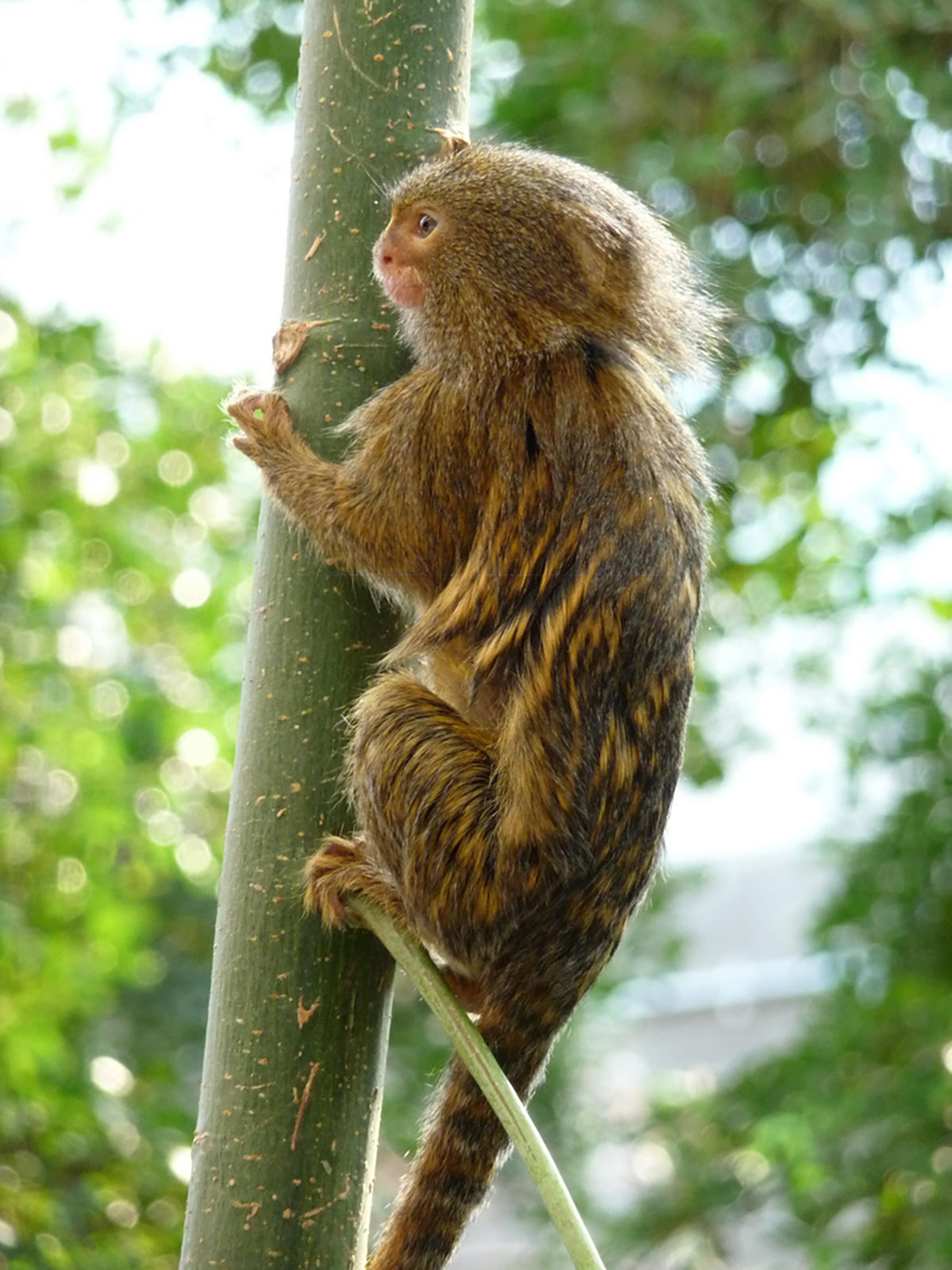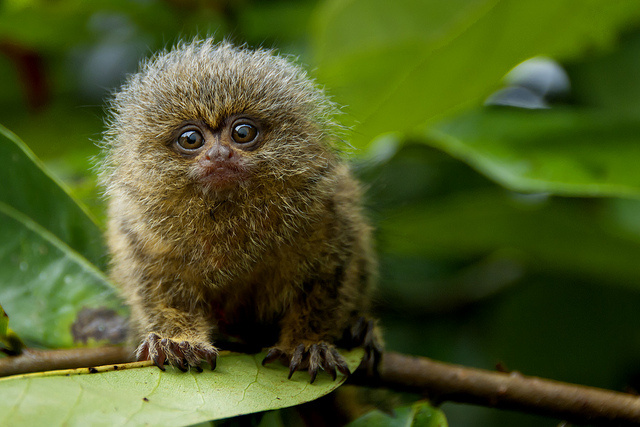The Tiny Pygmy Marmoset
Extraordinary animals fascinate humans. Weather it’s a tiny puppy, exotic bird, or a massive gorilla, something about unique physical or behavioral attributes attracts the eye. In this vein, marmosets recieve a lot of attention for their tiny size, exotic habitat and big personality. In South America, 22 species of marmosets reside in the trees, but the pygmy marmoset (also known as the finger monkey) is the world’s smallest true monkey.
Exploring the forest canopy near the Amazon River, pygmy marmosets live a life far above the rest of the world. Their habitat ranges throughout the western Amazon Basin, including Brazil, Colombia, Ecuador, Peru and Bolivia, and their population depends on the available tree and food resources. Following the river’s shoreline, they use the trees as a source of food, protection and shelter.
An Arboreal Habitat

Among the Trees
Tree-dwelling, or arboreal animals have different adaptations than those who live on the forest floor. For pygmy marmosets, everything from the shape of their body to the color of their fur is innately used to live among the leaves. Long tails used for grasping branches, brown striped fur, and even their long claws are used to maneuver around branches and hide from predators. With bodies that have evolved for life among the trees, pygmy marmosets are one of the most exotic arboreal animals in the Amazon.
The trees also provide food for these tiny animals, which indulges the marmoset’s sweet tooth. Their diet is based around the tree gum or sap that they find underneath the bark, a good source of water, nutrients and sugar. Their sharp teeth gnaw on the tree bark and long claws dig the sap out of the the hole. To round out their sugar-filled diet, they munch on nectar and fruit when it’s available. Even butterflies, also drawn to the tree sap, can become their lunch.
Pygmy Marmosets: Active & Social
 Like humans, most monkey species are social creatures. Their need for companionship, touch and community keeps their groups tight-knit. Family groups of 2-9 pygmy marmosets typically include a male, 1-2 females and their offspring. With twins being born twice per year, parenting responsibilities are shared with the group. The frequency that twins are born has been studied by scientists to help human parents as well. Marmoset babies are extremely small, and twins are known to (adorably) take piggyback rides on their parent’s back as they scamper through the trees. Their active, social personalities make marmosets even more intriguing.
Like humans, most monkey species are social creatures. Their need for companionship, touch and community keeps their groups tight-knit. Family groups of 2-9 pygmy marmosets typically include a male, 1-2 females and their offspring. With twins being born twice per year, parenting responsibilities are shared with the group. The frequency that twins are born has been studied by scientists to help human parents as well. Marmoset babies are extremely small, and twins are known to (adorably) take piggyback rides on their parent’s back as they scamper through the trees. Their active, social personalities make marmosets even more intriguing.
The strong social bonds within pygmy marmoset family groups not only serve as a means of support and protection but also play a crucial role in their communication and behavior. These primates exhibit complex vocalizations and body language to express emotions, share information, and maintain group cohesion. Observing their interactions can provide valuable insights into the evolution of communication strategies and social dynamics among primates, shedding light on the intricate web of relationships that form the foundation of their society. Researchers continue to delve into the fascinating world of pygmy marmosets to unravel the mysteries of their social structures and behaviors.
Explore Ecuador’s Diverse Fauna with Achuar Naturalists
Seeing exotic animals in the wild is a big draw of visiting the Amazon Rainforest. From birds to monkeys, the fauna in this region is unlike anywhere else in the world. In Ecuador, pygmy marmosets are found throughout the Amazon Rainforest, especially close to the river. With an Achuar naturalist to guide hikes, motorized canoe rides, and kayaking, guests on Gondwana’s Amazon Awakening tour will get a first hand look at the biodiversity of the rainforest.
Pink river dolphins inhabit the intricate waterways of the Amazon Basin, where they navigate through winding rivers and flooded forests. Their habitat provides ample opportunities for hunting, socializing, and raising their young in the richly biodiverse ecosystem of the Amazon rainforest. Learn more about pink river dolphins and their habitat.



